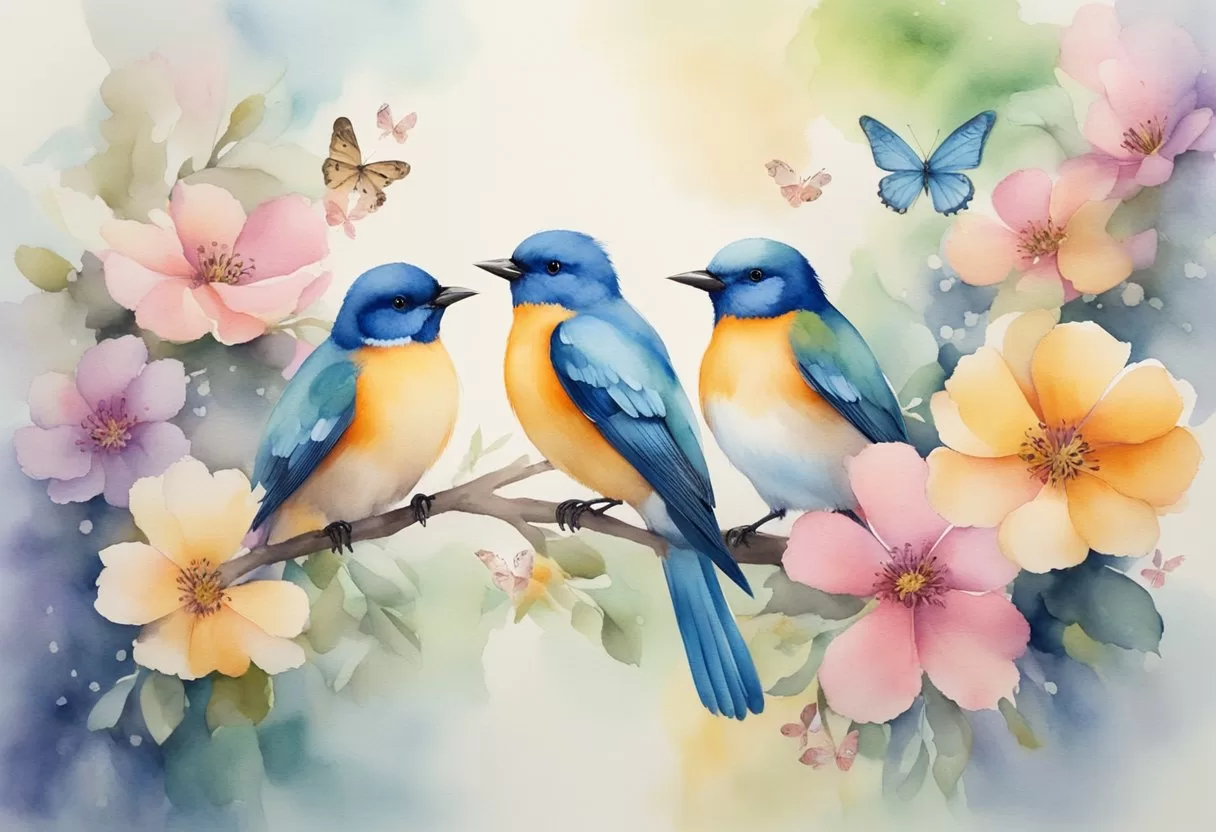Understanding Bird Courtship Behaviors
Bird courtship behaviors are complex and multifaceted activities that play a crucial role in reproduction. During the breeding season, various species engage in specific rituals designed to attract mates and ensure successful reproduction. These behaviors not only display the vitality of the individuals but also signal genetic fitness suitable for nurturing offspring.
The Significance of Courtship in Avian Reproduction
Courtship is essential in avian reproduction as it establishes pair bonds and facilitates mate selection. Birds often exhibit unique traits and behaviors to showcase their readiness to breed. This can include vibrant plumage in males or intricate songs that attract females.
For instance, a male’s bright feathers can indicate its health and genetic quality. Similarly, vocalizations serve to claim territory and demonstrate stamina. In many species, successful courtship can result in the establishment of long-term partnerships, which are vital for raising young.
Roles and Rituals: How Birds Attract Mates
Different bird species have distinct courtship rituals characterized by specific roles. Males typically engage in displays to attract females, employing techniques such as dancing, singing, or presenting food. These behaviors serve as signals to females about the male’s viability as a mate.
For example, many songbirds perform elaborate aerial displays, while species like cranes execute synchronized dances, incorporating flapping and jumping. These rituals not only emphasize physical fitness but also enhance emotional bonding between partners.
Additionally, some breeding season behaviors involve the exchange of food. A male may offer a female food as a display of nurturing capability. This act reinforces the male’s suitability for parenting.
Distinctive Courtship Displays of April

April is a vibrant month for birdwatching, as many species engage in striking courtship displays. These rituals are not only fascinating to observe but also critical for species propagation. Notable examples include the elaborate dances of great crested grebes, the stunning tail feather displays of peafowl, and the intricate mirroring movements of western grebes.
Great Crested Grebes: Elaborate Mating Dances
Great crested grebes are known for their remarkable courtship dance, which often takes place on calm waters. During this ritual, the male and female perform synchronized movements, including diving, bobbing, and presenting each other with aquatic vegetation.
The most striking moment includes the “rushing” display, where both birds quickly swim toward one another, their heads held high. They may also engage in various vocalizations that create a symphony of sounds, adding to the spectacle. The graceful movements of these birds exemplify the complexity of avian courtship and highlight their commitment to attracting a mate.
Peafowl Pageantry: Tail Feathers and Mating Calls
Peafowl, particularly the Indian and green varieties, exhibit one of the most visually stunning courtship displays in the avian world. Males, known as peacocks, fan out their extravagant tail feathers, displaying iridescent colors and elaborate eyespots to attract females, or peahens.
During the mating ritual, male peafowl perform a combination of dances and calls, creating a captivating show. The peacock shakes its tail feathers, producing a rustling sound that adds another layer to the performance. This display often occurs in lush, open areas, making them a highlight of springtime wildlife observation.
Western Grebes: Mirroring on Water
Western grebes showcase a unique courtship behavior known as “rushing” or “mirroring,” where a pair engages in coordinated swimming. The male and female often swim in unison, mimicking each other’s movements while maintaining eye contact.
As part of their courtship, they may also engage in elaborate dives and displays of physical agility, all while maintaining synchronization. This meticulous dance reinforces their bond and helps establish territory, making it an important aspect of their mating rituals. Observers can witness this mesmerizing performance as the grebes glide smoothly over the water’s surface, creating a striking visual display.
The Role of Environment in Bird Courtship
Environmental factors play a crucial role in the courtship behaviors of birds, particularly during the spring months when mating rituals intensify. The availability of suitable nesting habitats and food sources significantly impacts their breeding success and overall courtship dynamics.
Springtime Nesting and Breeding Habitats
Early spring brings a surge in bird activity as they seek optimal nesting sites. Many birds prefer specific habitats, such as dense shrubs or trees, which provide shelter from predators and harsh weather.
Key considerations include:
- Location: Areas protected from strong winds are favored.
- Material Availability: Birds look for nesting materials like twigs and grasses, which are abundant in spring.
- Rooftops vs. Natural Locations: Some species may choose urban settings for nesting, where they can find alternative materials and fewer predators.
As males establish territories, their vibrant plumage becomes crucial in attracting females. Colorful displays signal health and vitality, making them more appealing during mating rituals.
Food Abundance and Courtship Success
Food availability is another pivotal factor during courtship. In spring, Earth awakens, providing a dramatic increase in food resources.
Birds focus on:
- Insects: Rich protein sources are essential for mating and the production of eggs.
- Fruits and Seeds: These become standard as the season progresses, important for feeding during nesting.
Successful foraging enables males to display vigor through singing and elaborate flight patterns, reinforcing their appeal. A male that can secure ample food resources is often viewed as a better mate, capable of supporting future offspring. Environmental conditions thus dictate not only the timing of nesting but also the success of courtship rituals.
Share this content:

Post Comment
You must be logged in to post a comment.